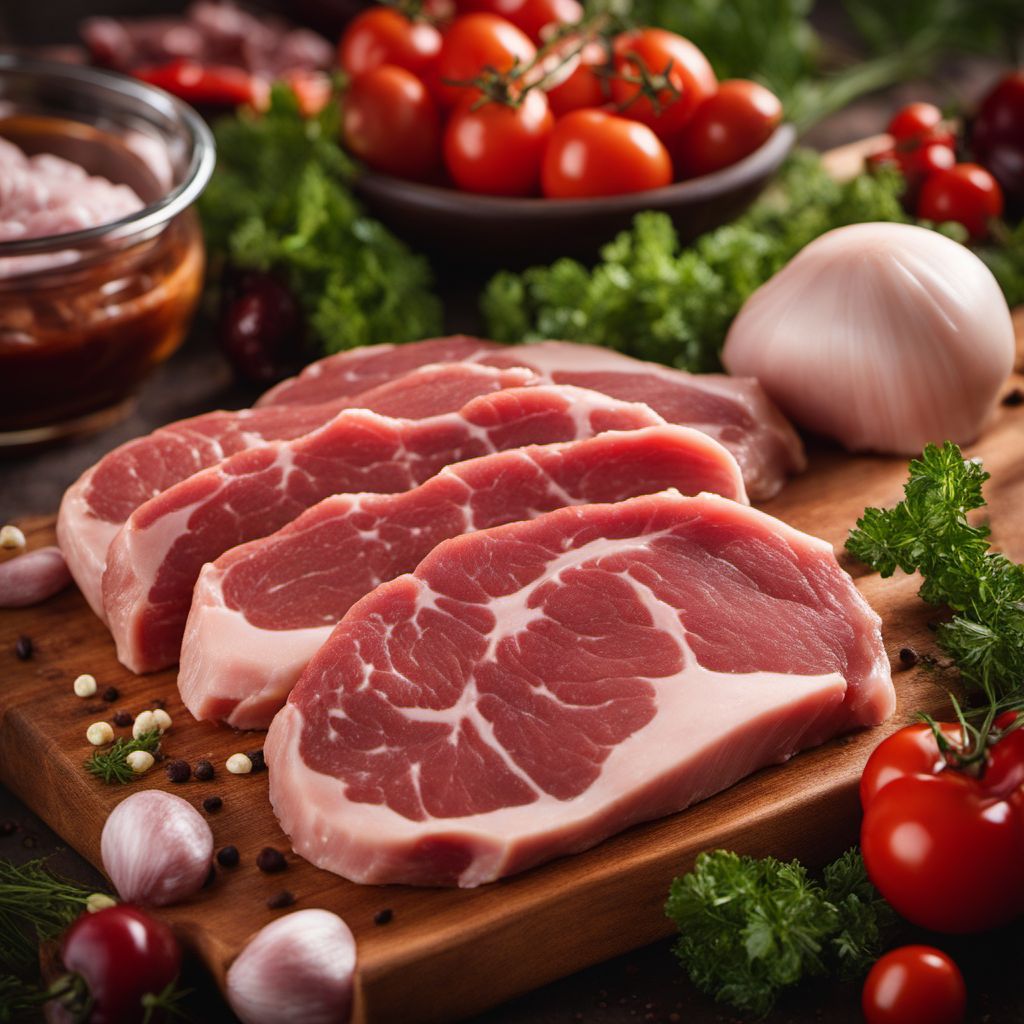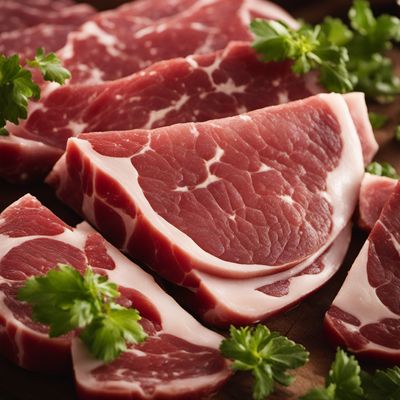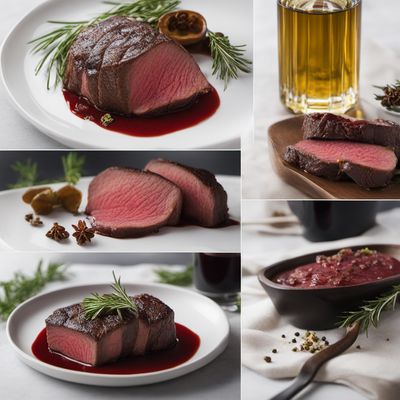
Ingredient
Calf fresh meat
Tender Delight: Exploring the World of Calf Fresh Meat
Calf fresh meat, obtained from young bovine animals, is characterized by its pale pink color, fine marbling, and tender texture. It has a mild, slightly sweet flavor that is less pronounced compared to beef. The meat is lean and delicate, making it ideal for quick cooking methods such as grilling, sautéing, or pan-frying. Its tenderness allows it to absorb flavors well, making it versatile for a wide range of culinary applications.
Origins and history
Calf fresh meat has a rich history dating back centuries. It has been consumed in various cultures, including European, Middle Eastern, and Asian cuisines. In many cultures, veal, the meat from young calves, holds cultural significance and is associated with celebratory meals or traditional dishes. The rearing and consumption of veal have evolved over time, with different regions developing their own unique methods of preparation and cooking.
Nutritional information
Calf fresh meat is a good source of high-quality protein, essential vitamins such as B12 and B6, and minerals like iron and zinc. It is relatively low in fat and calories compared to other meats, making it a nutritious choice for those seeking a lean protein option.
Allergens
Calf fresh meat may cause allergic reactions in individuals with a known allergy to beef or other meats. It is important to exercise caution and consult with a healthcare professional if any allergies are suspected.
How to select
When selecting calf fresh meat, look for cuts that are pale pink in color with a fine texture and minimal fat. The meat should be firm to the touch and have a fresh, clean smell. Avoid any cuts that appear discolored or have a strong odor.
Storage recommendations
To maintain the freshness and quality of calf fresh meat, it is best to store it in the refrigerator at a temperature below 40°F (4°C). It is recommended to use the meat within 1-2 days of purchase or freeze it for longer storage. When freezing, ensure proper packaging to prevent freezer burn.
How to produce
Producing calf fresh meat requires specialized knowledge and facilities. It involves raising young calves in a controlled environment, providing them with a balanced diet and proper care. This process is typically carried out by professional farmers or ranchers.
Preparation tips
Calf fresh meat can be prepared using various cooking techniques such as grilling, sautéing, roasting, or braising. For tender cuts, it is best to cook them quickly over high heat to retain their tenderness. Marinating the meat can enhance its flavor and tenderize it further. It is important to avoid overcooking calf fresh meat to prevent it from becoming tough.
Culinary uses
Calf fresh meat is commonly used in dishes such as veal scallopini, osso buco, Wiener schnitzel, and blanquette de veau. It is also a popular choice for stir-fries, stews, and kebabs. The tender and delicate nature of calf fresh meat allows it to be incorporated into a wide range of recipes, adding a touch of elegance and sophistication.
Availability
Calf fresh meat is commonly available in regions with a strong tradition of veal consumption, such as Europe, North America, and parts of Asia. It can be found in well-stocked grocery stores, specialty butcher shops, and online meat suppliers.
More ingredients from this category

Bovine, minced meat
Versatile Ground Beef

Buffalo, african fresh meat
The African Delicacy: Fresh Buffalo Meat

Cow, ox or bull fresh meat
The Prized Protein: Exploring Cow, Ox, or Bull Fresh Meat

Yak fresh meat
The Exquisite Delicacy of Yak Meat

Buffalo fresh meat
The Lean and Flavorful Protein

Zebu fresh meat
The Exotic Delicacy

Buffalo, american fresh meat
The Mighty Bison
Recipes using Calf fresh meat » Browse all

French Onion Consommé
Golden Elixir: French Onion Consommé

Haute Kaiseki: A Fusion of Japanese Elegance and Haute Cuisine Sophistication
Elevated Umami: A Haute Kaiseki Journey through Japanese Culinary Artistry

Argentinian Grilled Vacío with Chimichurri Sauce
Sizzling Argentinian Vacío: A Flavorful Grilled Delight

Tournedos à la Bordelaise
Savory Delight: Bordeaux-style Tournedos

Sichuan-style Spicy Beef Tournedos
Fiery Sichuan Beef Tournedos: A Spicy Twist on a Classic French Dish

Châteaubriand with Red Wine Sauce
Tenderloin Delight: Châteaubriand with a French Twist

New Jersey-style Spicy Calamari
Jersey Shore Firecracker Calamari

Costoletta alla Valdostana
Savory Alpine Veal Cutlets

German-style Pork Schnitzel with Creamy Mushroom Sauce
Crispy Pork Schnitzel with Savory Mushroom Delight

Cima alla Genovese - Stuffed Veal Breast
Savory Delight: Stuffed Veal Breast with Genovese Flair

Berber Spiced Surf and Turf
Saharan Delight: Berber Spiced Surf and Turf

Fijian-style Tournedos Rossini
Savory Beef Medallions with a Tropical Twist